Countryfile presenter Matt Baker has been training puppies since he was a boy, and here he takes us through his top tips with new member of the family Bob.
1. Use Verbal Communication
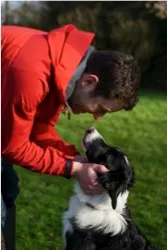
With any training, I find it best to have a clear set of commands set out from the start. Remember that although your dog seems to be a mind reader and is your best friend too, it doesn’t speak English. General conversation while training is confusing so keep it simple and give your dog a chance to learn what it is you want them to do. That said, when I praise my dogs I say whatever comes to mind as it’s the energy in your tone they’ll respond to, rather than what you’re saying.
2. Train your dog to heel
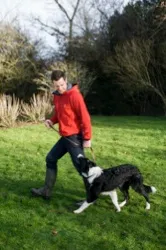
I’m using a couple of techniques to teach Bob to walk to heel. The most important thing is to allow him the time to learn. I walk forwards with the dog by my side (always to my left) and as soon as his head goes in front of my knee line, I say a crisp clean “heel” with a gentle tug on the lead, then turn 180 degrees and walk back in the direction I came from. Initially, if you get four paces before you have to make the turn you’re doing well! Soon Bob stopped pulling on the lead and wherever I turned, he quickly followed. As an incentive I hold a toy or treat near my body to keep him interested and make him realise I’m the best thing to be around. To mix it up, I alter my pace, often breaking into a jog.
3. Reward your dog
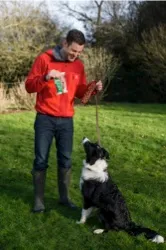
Find out what your dog likes, and you can turn it to your advantage by using it as a reward. Depending on its breed or personality the dog will be excited by a different stimulus, be it a squeaky toy, a tennis ball or food. It’s not difficult to work this out through play or meal times. I find the key to a happy well-behaved dog is to make desired actions worth it. If your dog does what you want, it in turn gets what it wants.
4. Just snap your fingers
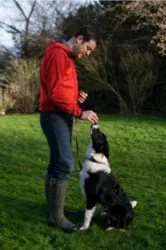
To train a dog to sit I simply walk in close and raise a treat above the dog’s nose in order to lift its head. It starts naturally dropping into the sit position. I say “sit” cleanly and always do a click of the fingers too. That’s very useful in social situations as you can click your fingers and carry on talking or interviewing!
5. Add ‘Magical Power’
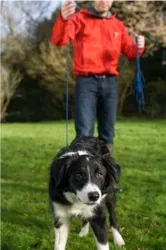
A long cord is great as it gives a young dog a sense of freedom but allows me the control if I need it. I use a really light cord, so light that Bob doesn’t realise he’s got it on. It works brilliantly for training young dogs to come to me after I call; if they don’t listen I give a gentle tug. Suddenly the dog thinks you have an invisible power over it! Fasten it to a buckled collar so it doesn’t tighten, keep an eye on where the string is going and never leave your dog alone with it on.
6. Train yourself too

A fun thing to do is set up a training course, more for your benefit than that of the dog as it gives you structure and order. On a course you’ll know exactly what you want your dog to do and when. Mix up ‘heel’ with ‘sit and stay’ and make it different every time you go around the course. It will give you and your dog extra confidence and control when out and about.
7. Take driving lessons

I’ve had dogs wary of getting into a vehicle, so to get over it I’ve fed them in the back of one while it’s parked. I progress to turning on the engine while they’re eating, so they associate its rumble with nice things and not stress. Don’t go for a drive while they’re eating or immediately afterwards as it’s likely to get messy! It’s worth taking time with this because before long the dog will be jumping into the car wagging its tail.

